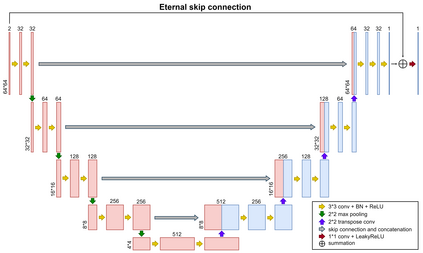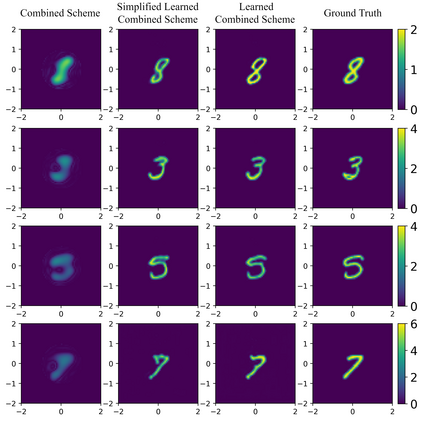This paper is concerned with the inverse problem of scattering of time-harmonic acoustic waves from an inhomogeneous medium in two dimensions. We propose a deep learning-based iterative reconstruction algorithm for recovering the contrast of the inhomogeneous medium from the far-field data. The proposed algorithm is given by repeated applications of the Landweber method, the iteratively regularized Gauss-Newton method (IRGNM) and a deep neural network. The Landweber method is used to generate initial guesses for the exact contrast, and the IRGNM is employed to make further improvements to the estimated contrast. Our deep neural network (called the learned projector in this paper) mainly focuses on learning the a priori information of the shape of the unknown contrast by using a normalization technique in the training process and is trained to act like a projector which is expected to make the estimated contrast obtained by the Landweber method or the IRGNM closer to the exact contrast. It is believed that the application of the normalization technique can release the burden of training the deep neural network and lead to good performance of the proposed algorithm. Furthermore, the learned projector is expected to provide good initial guesses for IRGNM and be helpful for accelerating the proposed algorithm. Extensive numerical experiments show that our inversion algorithm has a satisfactory reconstruction capacity and good generalization ability.
翻译:本文关注从不相容的介质中散布时间和谐声波的反面问题。 我们提出一个深层次的基于学习的迭代迭代重建算法,以从远方数据中恢复不相容的介质的对比。 提议的算法是通过反复应用Landweber方法、迭接的常规化Gaus-Newton方法(IRGNM)和深层神经网络提供的。 Landweber方法被用来为确切的对比产生初步猜测,而IRGNM则被用来进一步改进估计的对比。 我们的深层神经网络(本文中称为学习的投影仪)主要侧重于通过在培训过程中使用正常化技术来学习未知对比形状的先验信息,并被训练成像一个预计Landweber方法或IRGNMM方法获得的估计对比更接近精确对比的投影体。 相信,应用正常化技术可以减轻训练深层神经网络的负担,并导致拟议的算法的良好表现。此外,我们所学的模型和预估测算法的精确性演算能力,预示着能够令人满意地进行我所学进式的研算。




















